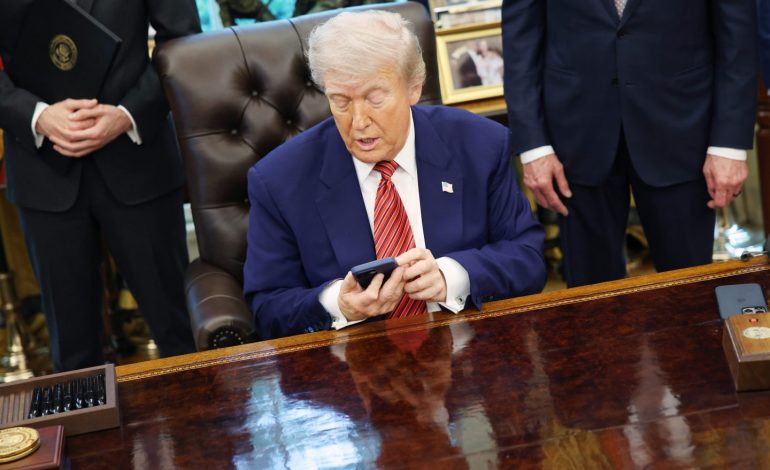The Trump Organization’s newly announced smartphone, marketed as “built in the United States,” is drawing skepticism from industry analysts who say the device will likely be produced—at least in large part—in China.
The announcement comes as the organization prepares to launch Trump Mobile, a wireless service offering the $499 gold-colored “T1” Android phone.
While the Trump Organization promoted the phone as being proudly designed and built domestically, supply chain experts and analysts suggest that claim may overstate the reality. Given the current limitations of the US smartphone manufacturing industry, experts believe the device will most likely be manufactured by an overseas original device manufacturer (ODM), with final assembly possibly taking place in the US.
“Despite being advertised as an American-made phone, it is likely that this device will be initially produced by a Chinese ODM,” said Blake Przesmicki, an analyst at Counterpoint Research.
He added that the US lacks the infrastructure, skilled labor force, and component supply chains needed for full-scale smartphone production.
Even Eric Trump, executive vice president of the Trump Organization, acknowledged in a recent podcast that initial production won’t be fully domestic.
“Eventually, all the phones can be built in the United States of America,” he said, suggesting a phased approach.
The move puts the Trump Organization in an ironic position: subject to the same trade policies and tariffs former President Donald Trump championed to incentivize American manufacturing. Trump has previously criticized companies like Apple for producing devices overseas and recently proposed a 25% tariff on smartphones not made in the US.
“Ultimately, whether we’re talking about screens, camera technologies, or chipsets, almost all of this comes from the same manufacturing hubs in Asia,” said Leo Gebbie, principal analyst at CCS Insight. “There’s no serious chance this phone is being manufactured in the US at scale—especially not before its August launch.”
Analysts suggest that the phone could be assembled domestically using imported components, a common practice that can meet certain regulatory or marketing criteria for “Made in USA” labeling without full domestic production.
In recent years, the Trump administration and political allies have promoted reshoring manufacturing, but experts say the barriers to achieving this in consumer electronics remain high. US-made smartphones have been virtually nonexistent since the 2G era, according to Przesmicki.
Meanwhile, geopolitical tensions and shifting trade policies have made some companies re-evaluate their global supply chains. China’s dominance in electronics manufacturing, combined with its ties to critical materials and parts, continues to make it a central player in tech production—despite political pressure to reduce reliance.
The Trump Organization has not publicly responded to questions about the phone’s production details. However, analysts believe the messaging around domestic assembly may serve more of a symbolic purpose, aligning with political rhetoric and signaling an alternative to larger tech firms.









The latest news in your social feeds
Subscribe to our social media platforms to stay tuned